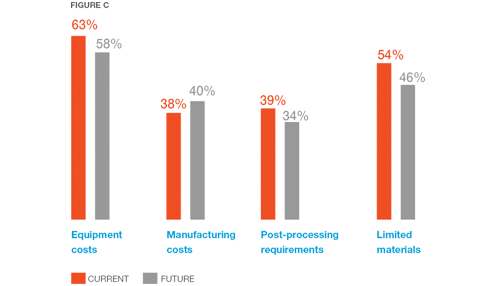In order to overcome these challenges, we believe the industry must change the conversation from emphasizing additive manufacturing’s technical benefits to overall business value. Companies need to not only identify applications and parts to build with 3D printing, but look at their manufacturing strategy as a whole to see how the technology can enable innovation and add value to overall operations. Instead of finding products that fit the technology, make the technology fit the product and business model. Think about the business drivers, such as:
- Economic low volume production
- Cost effective customization
- Improved environmental sustainability
- Optimized supply chains
- Manufacturing efficiency with more tools, jigs & fixtures
- Reduced inventory of spare parts
- Reduced lead times
- Reduced raw material consumption
This change in thinking needs to happen at the leadership level. Implementing additive manufacturing for true business value affects multiple areas beyond just design and engineering. You need to consider productivity, training, supply chains, product optimization, environmental impact, R&D and overall manufacturing ROI.
Download our full survey report to see what steps companies are already taking to combat these challenges and prepare for implementing additive manufacturing in the future. If your company is a committed user of 3D printing, these findings will also provide assurance you are headed down a similar path of your peers and face many of the same challenges to adoption. If you’re not there yet, the results may serve as a wake-up call to take action because companies who don’t initiate investment soon will quickly be at a disadvantage.


